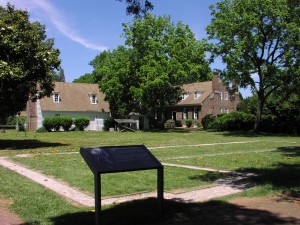WASHINGTON — Scorching summer temperatures kept many air-conditioning systems on overdrive during July. However, there are a variety of alternatives to the traditional HVAC (Heating, Ventilation, and Air Conditioning) systems that blow air through ducts.
Drawing in the cool
Ordinary fans make you feel cooler by moving air around, but they don’t cool the air. Whole-house fans operate on an entirely different concept. Installed in the attic or on the ceiling between the attic and living space, whole-house fans are designed to pull large volumes of warm, stale air up and out of the house while drawing fresh, cooler air in from outside.
The best way to use a whole-house fan, according to Quiet Cool Manufacturing, which makes Quiet Cool Whole House Fans, is by turning off the air-conditioning in the evening when the outside temperature is below 85°F (29°C), and then turning on the fan.
Whole-house fans cost between $430 and $1,550, according to R.E. Williams Contractor, which distributes fans.
Savings and payback periods depend on the house and the climate, says Mary Driscoll, an R.E. Williams representative. “(A fan) definitely saves you money,” she says. “Our fans are more energy-efficient than a traditional air-conditioning unit.”
Noise can be an issue with whole house fans—especially, as the EPA notes, if they are improperly installed. In general, according to the EPA, a large-capacity fan running at a low speed is quieter than a small fan running at a high speed. The agency recommends installing all fans with rubber or felt gaskets to lessen the noise, and setting multi-speed fans to lower speeds.
R.E. Williams’s fans have “noiseable” ratings, Driscoll said.
Of course, whole-house fans are effective only when the outdoor temperature is lower than the indoor temperature. But in climates where the temperature drops at night, a whole-house fan can save 50 to 90 percent of the cost of air-conditioning.
Air-conditioning goes underground
The earliest home of America’s first president has tapped into the Earth for cooling.
In June, the propane-based heating and cooling system at the George Washington Birthplace National Monument, known formerly as Popes Creek Plantation near Fredericksburg, Virginia, was replaced with a geothermal system. In addition to replacing fossil fuel with a renewable source—the constant temperature of the Earth, the system is silent, which is important to maintaining the building’s atmosphere.

George Washington's original birthsite is kept cool by a geothermal system that circulates water underground to remove heat from the building. (NPS.gov)
So far it has been “a huge success,” says Dick Dretsch, chief of cultural natural resources and maintenance at the park. “It works terrifically.”
Geothermal heat pumps circulate water or other liquids in a continuous loop through pipes buried underground at depths of 10 to 300 feet (3 to 91 meters), according to the Geothermal Energy Association. Underground, it’s 55°F (12.7°C), regardless of the season. During warm weather, heat is sucked out of the building and circulated underground to be cooled before returning to the building. During cold weather, the underground temperature is warmer than the outdoors, so that relative warmth is drawn out of the Earth and distributed through the house to cut energy needed for heating.
According to the U.S. Environmental Protection Agency, the pumps use 25 to 50 percent less electricity than conventional heating or cooling systems, and can reduce energy consumption and carbon emissions as well. The EPA says geothermal heat pumps also are very effective in humid areas because they can keep relative indoor humidity at about 50 percent.
Payback periods vary. Doug Dougherty, president and chief executive of the Geothermal Exchange Organization, just had an $18,000 geothermal system installed in his own home in Springfield, Illinois. Although he says that’s twice the cost of traditional air-conditioning, he expects it will pay for itself in four to five years, cutting his annual energy bill by two-thirds.
Water-chilled spaces
A cooling method used by the ancient Romans—circulation of cold water—has found a modern home at Harvard University. The hydronic air-conditioningsystem used at Harvard’s operational services facility at 46 Blackstone Street in Cambridge, Massachusetts, is one of the energy-efficiency innovations that has helped win the building the U.S. Green Building Council’s top-ranked PlatinumLEED status.
“Folks who come to this building always comment on how quiet this building is,” said Jeffrey Smith, director of facilities maintenance operations at Harvard. “They’re not even sure why—but it’s the absence of mechanical noise.”
Hydronic cooling works through convection. Chilled water (typically between 45° and 50°F (7.2° to 10°C) circulates through pipes affixed to walls or incorporated into ceilings. Air flows past the tubes, sinking down the walls as it cools. A tray, usually formed by the casing around the pipes, catches condensation and returns it to the water source. The Harvard building relies on 170 hydronic valances to cool and heat the 40,000-square-foot office space.
The system is quiet because it needs no fan to blow air past the pipes. According to the U.S. Department of Energy’s Lawrence Berkeley National Laboratory, hydronic systems can fit in 20 percent of the space required for a traditional ducted air-conditioning system.
A system that can be affixed to a wall, such as that made by Edwards Valance, will save $183 per unit per year compared with fan coil systems, according to the company’s website. Installation can cost roughly $2.50 per square foot, but depends on the type of building, contractors’ fees, and location, according to Edwards Valance spokeswoman Pat Colvin.
“Initially they might be a little bit more than a standard fan coil” or the space units known as Packaged Terminal Air Conditioning systems, she said. “But in actuality that money will be returned to you in three years.”
